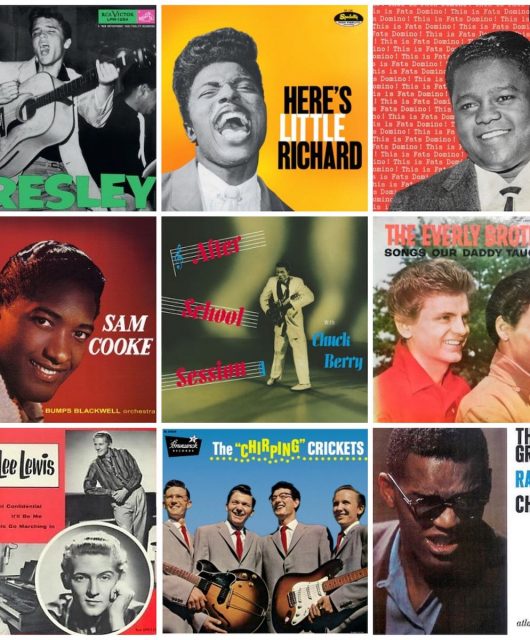Deep Purple alumni join the UK’s best studio session men to blast out rock’n’roll covers – and silly pseudonyms shield their identity
Even the most celebrated musicians of their era can occasionally serve up something that flies almost entirely under the radar.
Ritchie Blackmore, once the prowling Strat-wielding guitar god of Deep Purple and Rainbow fame and now quite literally a Renaissance man playing 15th and 16th century music in Blackmore’s Night was also the star player on an extraordinary anonymous recording session that sank virtually without trace.
The Green Bullfrog album crawled rather than leapt out of the blocks when it was released in the spring of 1971. The brainchild of producer Derek Lawrence, this mostly covers set featured a dazzling array of the UK’s finest players.
The nine musicians had previous form with Lawrence throughout the 60s; reliable stalwarts of the session scene who in some cases had already progressed to international success.
Joining Blackmore, aka ‘Boots’ for the purposes of these sessions thanks to his predilection for wearing suede cowboy boots – all the musicians were given pseudonyms for contractual reasons – was Deep Purple bandmate Ian Paice (named ‘Speedy’ due to his rapid playing style and a pun on his surname). Their interplay is key to the success of the resultant LP.
Lawrence had principally conceived the Green Bullfrog project with guitarist Albert Lee in mind alongside former Screaming Lord Sutch bassist Tony Dangerfield. After initial sessions with Dangerfield didn’t work out, his services were dispensed with.
Lee remained on board and Lawrence restaffed the project to include Chas Hodges (‘Sleepy’ – he had a habit of grabbing 40 winks during recording sessions), later of Chas & Dave fame, as a new bass player. Hodges had previously performed with Blackmore as part of The Outlaws, the early 60s instrumental outfit overseen by producer Joe Meek. The Outlaws became a house band for Meek, working on material for Mike Berry, Gene Vincent, Houston Wells, Heinz and Geoff Goddard.
Joining the Green Bullfrog alumni on piano and organ was Tony Ashton, later to collaborate further with Paice and fellow Purple icon Jon Lord during a temporary band hiatus for the short-lived Paice Ashton Lord supergroup.
And the talent didn’t stop there. Matthew Fisher (aka ‘Sorry’ for his habit for offering profuse apologies if he fluffed a take), organist with Procol Harum, who provided the haunting melody line for their timeless classic A Whiter Shade Of Pale, appeared on piano.
The Green Bullfrog project was most notable, though, for being packed to the gills with dazzling guitarists. The least known of them was Rod Alexander (‘The Vicar’), a friend of Blackmore’s who worked in a music shop on the Charing Cross Road. In fact, such was the ad hoc and informal nature of proceedings that Alexander had only arrived at the session to deliver some guitar strings but was persuaded to stay and play along.
Albert Lee (‘Pinta’) had already laid out his credentials as one of the UK’s finest session guitarists but even he had to bow to the authority of Big Jim Sullivan, the king of the homegrown six-string studio architects. Noticeably Big Jim is given the moniker of ‘The Boss’ here, a rare occasion where Blackmore had to play second fiddle to anyone. However, Ritchie’s deference to Big Jim was fitting as Sullivan had helped him hone his craft as an instrumentalist during his early days in the industry.
More than holding his own with such austere company is vocalist Earl Jordan, who fronted the Les Humphries Singers.
The bulk of the Green Bullfrog album was recorded live on to four-track tape in just two recording sessions at Soho’s De Lane Lea Studios on 20 April and 23 May 1970 with later overdubs of strings and brass added on 4 January 1971.
The original vinyl incarnation found the band rattling through eight songs that took in rock’n’roll and blues covers alongside their own original material – the rollicking near-title track Bullfrog was effectively the Deep Purple song Jam Stew that had been recorded for a Stuart Henry BBC Radio 1 session the previous year.
The covers are well chosen and play to the band’s strengths. Blackmore’s riffing shines on Arthur Crudup’s My Baby Left Me, which also boasts a rockin’ piano part and terrific vocals from Jordan. Ritchie’s fleet-fingered solo steals the honours.
Album highlight Lawdy Miss Clawdy, has a thumping bottom end and Jordan is once again in fine voice ably assisted by a trademark trilling solo by Blackmore. Joe South’s Walk A Mile In My Shoes, a mainstay in Elvis’ live set over many years, is taken at breakneck pace with Paice living up to his ‘Speedy’ pseudonym and Hodges on sparkling form. Lush strings add sophistication to the gritty studio vibe. The Creation’s Mod classic Makin’ Time also gets an airing and compares well with the crunchy original.
My Baby Left Me and the Lawrence co-write Lovin’ You Is Good For Me Baby were selected as lead singles but failed to chart. After the departure of MCA Records president Mike Maitland the LP limped out to little fanfare, disappearing with barely any promotion. Green Bullfrog’s second coming arrived almost 20 years later. Following a remix at Abbey Road Studios, the album was reissued on CD in 1991 with three additional tracks including a swampy take on Bo Diddley’s seminal Who Do You Love?; Blackmore’s soloing taking this into an altogether more unhinged territory than the chugging original.
An outlier in the back catalogue of the A-list talent that played on it, Green Bullfrog nevertheless warrants re-evaluation. Boasting a stunning rhythm section and stellar guitarists, it deserves a much better fate than its forgotten status.






